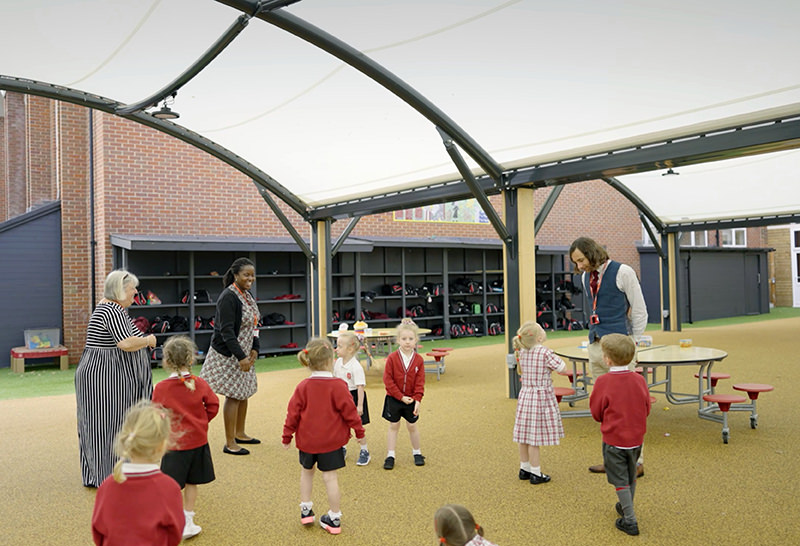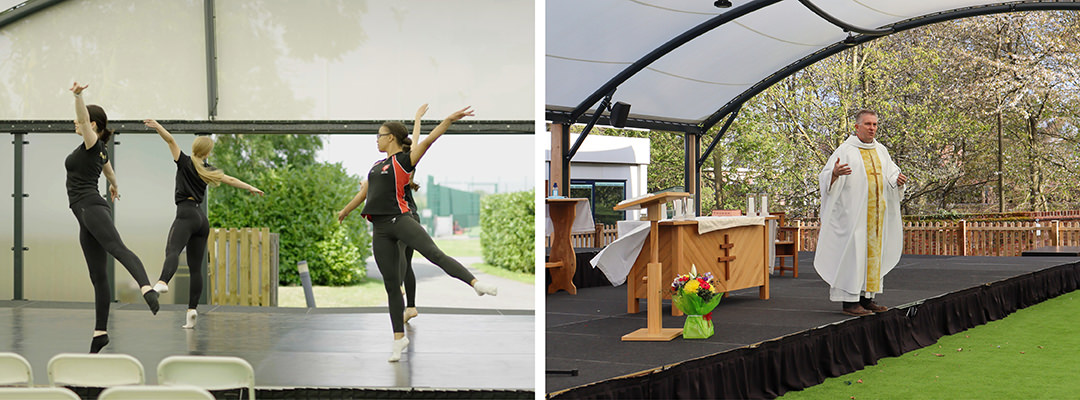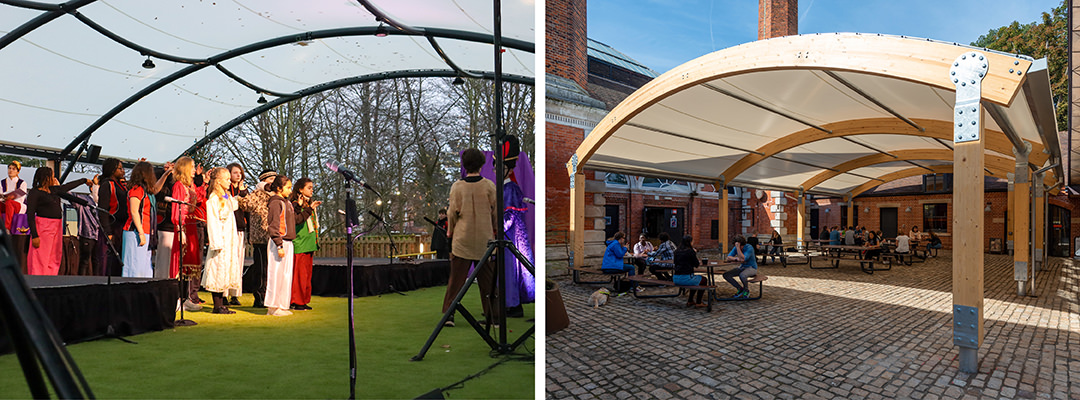Canopies & Walkways
- All Canopies & Walkways
- Fabric Canopies
-
Polycarbonate Roof
Canopies - Covered Walkways
- Enclosed Canopies
- MUGA Canopies
- Timber Canopies
- Entrance Canopies

Outdoor Classroom Day: The Benefits of Outdoor Learning

Outdoor Classroom Day is an exciting global movement that aims to highlight the importance of outdoor learning and play for children, at home and school. The pandemic significantly limited exposure to the outdoors for many children and often denied them opportunities to learn and grow beyond the confines of their homes. This particularly impacted children who lived in flats and communal buildings without access to a garden or outdoor space.
It has long been recognised that outdoor learning and play is essential for children’s development, but is even more important now that social distancing measures and heightened awareness govern many of our social interactions. As a result, schools and teachers both recognise the advantages of dynamic outdoor learning environments and innovative ways to teach.
Find out how your school can get involved by visiting the link here.
Outdoor Classroom Day aims to incorporate outdoor learning as part of every school day and reach a consistent minimum target for playtime. Since the movement began back in 2012, 35 million hours of extra outdoor time have been enjoyed by children, and thousands of schools have realised the benefits it can have.

When surveyed on the benefits of outdoor learning 89% of teachers globally reported children are happier when learning outdoors while 88% reported their classes were more engaged learning in outdoor environments. Conversely 79% of respondents cited weather as a barrier to getting children outside more often. Even so, globally 44% of teachers reported increasing the type and frequency of lessons taken outside. It is clear a shift in attitudes to outdoor learning is taking place and with some creative thinking underutilised outdoor space on school grounds can be transformed into rich, multifaceted learning areas allowing teachers room to be creative with their teaching methods. Pupils can also benefit from a variety of different learning experiences that aids creativity, independence, and problem-solving abilities.
The first-hand experience of learning outside the classroom can help to make subjects more vivid and interesting for pupils and enhance their understanding. Additionally, it can contribute significantly to pupils’ personal, social, and emotional growth.
A UK study commissioned by the National Trust suggests children today spend half the time their parents did playing outside.
Compared to previous generations, children today only devote four to seven minutes each day to unstructured outdoor play while consuming electronic media for an average of seven and a half hours. Encouraging children to spend time outside during the school day may further prompt them to do so outside of school.
Children can engage in a wide variety of learning activities outdoors, and with reliable cover, time outside can be extended even further providing safe and clean environments in which to play, take part in lessons, have lunch with peers, and try new sports.
Dedicated outdoor classrooms and learning areas can provide a multitude of uses beyond educational purposes benefiting the whole school, as well as the local community. Schools have found multiple different ways to get the most out of their outdoor classrooms including holding religious ceremonies, space for music and dance performances, extra-curricular events on evenings and weekends, parents’ evenings, and as multi-use games areas to name but a few.

The winter season can make both teachers and children hesitant to venture out into the cold as well as make break times less enjoyable due to icy and frozen conditions. Simple steps like ensuring children are wearing appropriate warm layers and waterproofs go a long way to helping children safely spend more time outdoors. To further help mitigate seasonal weather conditions there are ways to adequately protect children from the elements while still encouraging them to spend more time outside. All-year-round canopy structures can offer all-season protection with the possibility of adding sides for further shelter. They can protect children from the rain and ensure that they can still play outdoors.
During the summer months, children can also face challenges when the weather is extremely hot and teaching staff have a responsibility to ensure pupils are protected. Children love playing outdoors but are often unaware of the harmful effects too much sun can have. A canopy can provide much needed shelter from damaging UV rays and protect large numbers of children at once, enabling them to continue learning and playing whatever the weather. An approach that has long been embraced in the southern hemisphere and is now being more widely adopted in the UK and other European countries.
As outlined above, there is huge potential for outdoor learning and play to enrich the lives of school children, and Outdoor Classroom Day is an excellent initiative to raise visibility. As technology advances, it’s important for schools and educators to recognise the impact of the outdoors, particularly on mental and physical health, and implement this within their curriculum.
To view more ideas and resources from the Outdoor Classroom Day initiative please follow this link.
